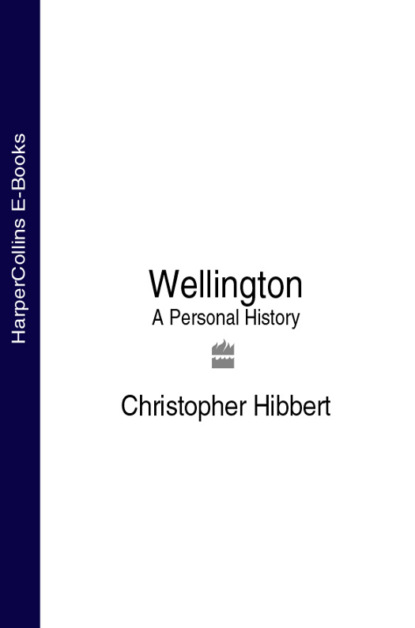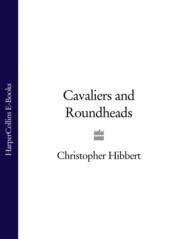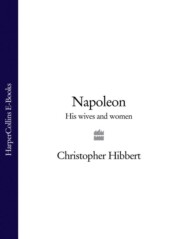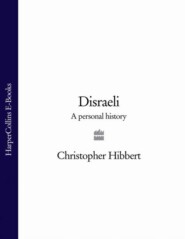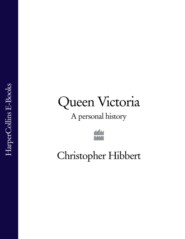По всем вопросам обращайтесь на: info@litportal.ru
(©) 2003-2024.
✖
Wellington: A Personal History
Настройки чтения
Размер шрифта
Высота строк
Поля
Lord Castlereagh. National Portrait Gallery, London. Photograph Mansell Collection.
Harriet Arbuthnot. Photograph Mary Evans Picture Library.
Charles Arbuthnot. Reproduced courtesy of the National Portrait Gallery, London.
Frances Mary Gascoyne-Cecil, second Marchioness of Salisbury. Portrait by Sir Thomas Lawrence. Hatfield House. Reproduced courtesy of Lord Salisbury and National Portrait Gallery, London.
Apsley House, No. i London. Reproduced courtesy of the Board of Trustees of the Wellington Museum, Apsley House.
View of the proposed Waterloo Palace. Reproduced courtesy of the Duke of Wellington KG; photograph Courtauld Institute of Art.
Charles Greville. Photograph Mary Evans Picture Library.
Lady Charlotte Greville. Copyright British Museum.
Oil sketch of the Duke, by Sir Thomas Lawrence. Reproduced courtesy of The Duke of Wellington KG; photograph Courtauld Institute of Art.
‘Achilles in the Sulks’: caricature by Thomas Howell Jones. Copyright British Museum.
Repose, a lithograph by H.B. (John Doyle). Copyright Museum of London.
Punch drawing of the Duke’s statue. Pub. Vol. II, July-December 1846, p. 150. © Punch Ltd.
Walmer Castle. Photograph Mary Evans Picture Library.
‘The Field of Battersea’: caricature by William Heath. Reproduced courtesy of the Board of Trustees of the Wellington Museum, Apsley House.
Sketch by Benjamin Robert Haydon for his Wellington Musing on the Field of Waterloo. Reproduced courtesy of The Duke of Wellington KG; photograph Courtauld Institute of Art.
Wellington Musing on the Field of Waterloo, by Haydon. Reproduced courtesy of the Board of Trustees of the National Museums and Galleries on Merseyside (Walker Art Gallery).
Queen Victoria’s first Privy Council meeting, by Sir David Wilkie. The Royal Collection © Her Majesty The Queen.
Miniature engraving of the Duke aged seventy-five. Reproduced courtesy of The Duke of Wellington KG; photograph Courtauld Institute of Art.
Franz Xaver Winterhalter’s portrait of the Duke with Sir Robert Peel. The Royal Collection © Her Majesty The Queen.
Baroness Burdett-Coutts, by Sir William Charles Ross. Reproduced courtesy of the National Portrait Gallery, London.
Elizabeth Hay, later Duchess of Wellington, the first Duke’s daughter-in-law. Photograph Mary Evans Picture Library.
Arthur Richard Wellesley, the Duke’s elder son, later second Duke of Wellington. Reproduced courtesy of The Duke of Wellington KG; photograph Courtauld Institute of Art.
Robert Thorburn’s painting of the Duke with his grandchildren. Reproduced courtesy of The Duke of Wellington KG; photograph Courtauld Institute of Art.
COLOUR
Goya’s portrait of Wellington painted in August 1812. The National Gallery London; photograph Bridgeman Art Library, London.
Wellington at Waterloo. Copyright British Museum.
Equestrian portrait by Sir Thomas Lawrence. Private Collection; photograph Bridgeman Art Library, London.
Sir David Wilkie’s Chelsea Pensioners reading the Waterloo Despatch. Reproduced courtesy of the Board of Trustees of the Wellington Museum, Apsley House.
Princess Lieven, by Sir Thomas Lawrence. The Hermitage, St Petersburg; photograph Bridgeman Art Library, London.
The Stratfield Saye estate. Reproduced courtesy of The Duke of Wellington KG.
The library at Stratfield Saye. Reproduced courtesy of The Duke of Wellington KG.
The Duke’s bedroom at Apsley House. Reproduced courtesy of the Board of Trustees of the Wellington Museum, Apsley House.
The Duke in 1824, painted by Sir Thomas Lawrence for Sir Robert Peel. Reproduced courtesy of Wellington College.
Franz Xaver Winterhalter’s The First of May. The Royal Collection © Her Majesty The Queen.
‘A Quartette in Character’: caricature by William Heath. Private Collection; photograph Bridgeman Art Library, London.
The Duke at seventy-five: portrait by Charles Robert Leslie. Copyright British Museum.
The Duke’s funeral procession, after a painting by Louis Haghe. Guildhall Library, Corporation of London; photograph Bridgeman Art Library, London.
AUTHOR’S NOTE AND ACKNOWLEDGEMENTS (#ulink_6ed9563d-67ad-5322-a98e-63dbe8542450)
Any biographer who now attempts to write a life of the Duke of Wellington does so in the shadow, so to speak, of Elizabeth Longford whose splendid book about him was published in two volumes in 1969 and 1972. This book does not, of course, pretend to take its place; but if, as has been suggested, a person really worth writing about deserves reappraisal every twenty years, the time has certainly come for a new look at the Duke. This one skates rather quickly over his generalship and his political entanglements to concentrate more fully on those aspects of his life suggested by the book’s sub-title.
The idea of my writing it came originally from the Hon. Georgina Stonor, whose knowledge of the Wellington Papers is extensive and whose library of books on the Duke and his family has been placed unreservedly at my disposal. I am extremely grateful to her for all her help, as I am to his Grace the eighth Duke of Wellington for allowing me to consult and quote from his great-great-grandfather’s personal papers at Stratfield Saye and for his assistance when I was there.
I must express my thanks also to Dr C.M. Woolgar, Archivist and Head of Special Collections at the Hartley Institute, the University of Southampton, in whose care are the Duke of Wellington’s official papers, and to Claire Jackson for her help when I was working at the Institute.
Southampton University and Stratfield Saye are the principal repositories of the Duke’s papers; but I have also made use of letters and papers by or about him elsewhere. I have therefore to acknowledge with gratitude the gracious permission of Her Majesty the Queen to make use of material in the Royal Archives, Windsor Castle, and to express my thanks to Lord Raglan for the use of the Raglan Papers, including letters from the Duke to his brother William Wellesley-Pole, at Gwent Record Office; the Marquess of Tweeddale for use of the Yester Papers in the National Library of Scotland; the Marquess of Salisbury for use of papers at Hatfield House including the Westmeath Papers and letters from the Duke to the first wife of the second Marquess of Salisbury, her diary and the Duke’s letters to the second wife of the second Marquess; Mrs M. Fry of Fulbeck Hall for a letter from the Duke to the Countess Dowager of Westmorland in the Fane Papers; Adrian Francis for the ‘Manuscript Account of the Services of John Parker, Corporal 20th Foot’; Wellington College for letters to and from the Duke and his accounts in the college’s archives; and Miss S.M. Fletcher, Archivist, Hampshire Record Office for photocopies of the Duke’s Lieutenancy Papers.
For helping me with these and other papers I am most grateful to Oliver Everett, Librarian, Windsor Castle; David Rimmer of the Gwent Record Office; Mr I.F. Maciver, Assistant Keeper, Manuscripts Division, the National Library of Scotland; Robin Harcourt Williams, Librarian and Archivist to the Marquess of Salisbury; and Bijan Omrani, Deputy Archivist, Wellington College.
I am also much indebted to Dr Norma Aubertin-Potter, Sub-Librarian, All Souls College, Oxford; Simon Bailey of Oxford University Archives, Bodleian Library, Oxford; Richard Olney, Assistant Keeper, the Royal Commission on Historical Manuscripts; Judith Curthoys, Assistant Archivist, Christ Church, Oxford; Dr J.N. Mills of the Historical Search Room, Scottish Record Office; Penelope Hatfield, College Archivist, Eton College Library; Dr Peter Boyden of the National Army Museum; Dr Linda Washington, Head of the Department of Printed Books, National Army Museum; and the staffs of the British Library, the London Library and the Ravenscroft Library, Henley-on-Thames.
For help in tracing the Duke’s movements and activities when in the provinces I am most grateful to Elizabeth Rees, Chief Archivist, Tyne and Wear Archive Services; Rita Freeman, City Archivist, York; Jennifer Gill, County Record Office, Durham; Eileen Organ, Supervisor, Liverpool Record Office, Central Library, Liverpool; Jeremy McIlwaine, Archivist (Diocesan Records), Hertfordshire County Record Office; Richard Leonard, Research Archivist, Centre for Kentish Studies, Maidstone; Bruce Jackson, County Archivist, Lancashire Record Office; Penny Ward, Heritage Officer, Margate Library; and Janet Adamson, Heritage Officer, Folkestone Library.
For help with portraits and busts and the general inconography of the Duke I have to thank Dr Helen Smailes, National Gallery of Scotland; Dr Philip Ward-Jackson, Deputy Conway Librarian, Courtauld Institute of Art; Ian Ritchie, Archive Assistant, National Portrait Gallery; Paul Goldman, Assistant Keeper, Department of Prints and Drawings, British Museum; Liz Vance, Information Assistant, National Gallery; Fiona Pearson, Research Assistant, Scottish National Gallery of Modem Art; A.W. Potter, Information Assistant, Royal Academy of Arts; Julia Toffolo, Registrar, Government Art Collection; Helen Watson of the Scottish National Gallery; Christopher Eimer; Dr Peter Beal and Stephen Lloyd of Sotheby’s; John Kenworthy-Browne; Jonathan Marsden, Deputy Surveyor of the Queen’s Works of Art; Helen Valentine of the Royal Academy of Arts; Mireille Galinou of the Museum of London; and Marjorie Trusted of the Victoria and Albert Museum.
For their help in a variety of other ways I am most grateful to the Marquess of Anglesey, Lady Marioth Hay, Lady Pamela Barbary, Major D.A.J. Williams, Regimental Secretary of the King’s Royal Hussars, Captain J.G. Fergusson, Richard Way, Diana Cook, Dennis Flower, David Nugent, Peter Crane, Oliver Cooper, Margaret Lewendon, Rosemary Foster, Dr Francis Sheppard, Bruce Hunter of David Higham Associates and Richard Johnson of HarperCollins. I want also to thank Deborah Adams who edited the book; Anna Grapes who helped me choose the illustrations; Hamish Francis who read the proofs; and my wife who made the comprehensive index.
Finally I must say how grateful I am to Professor Norman Gash, biographer of Peel and author of the article on Wellington in the forthcoming New Dictionary of National Biography, for having read the book in typescript and given me much valuable advice for its improvement.
Christopher Hibbert
MAPS (#ulink_0bf4f212-d2ee-5764-9043-a8cff78cfeb6)





